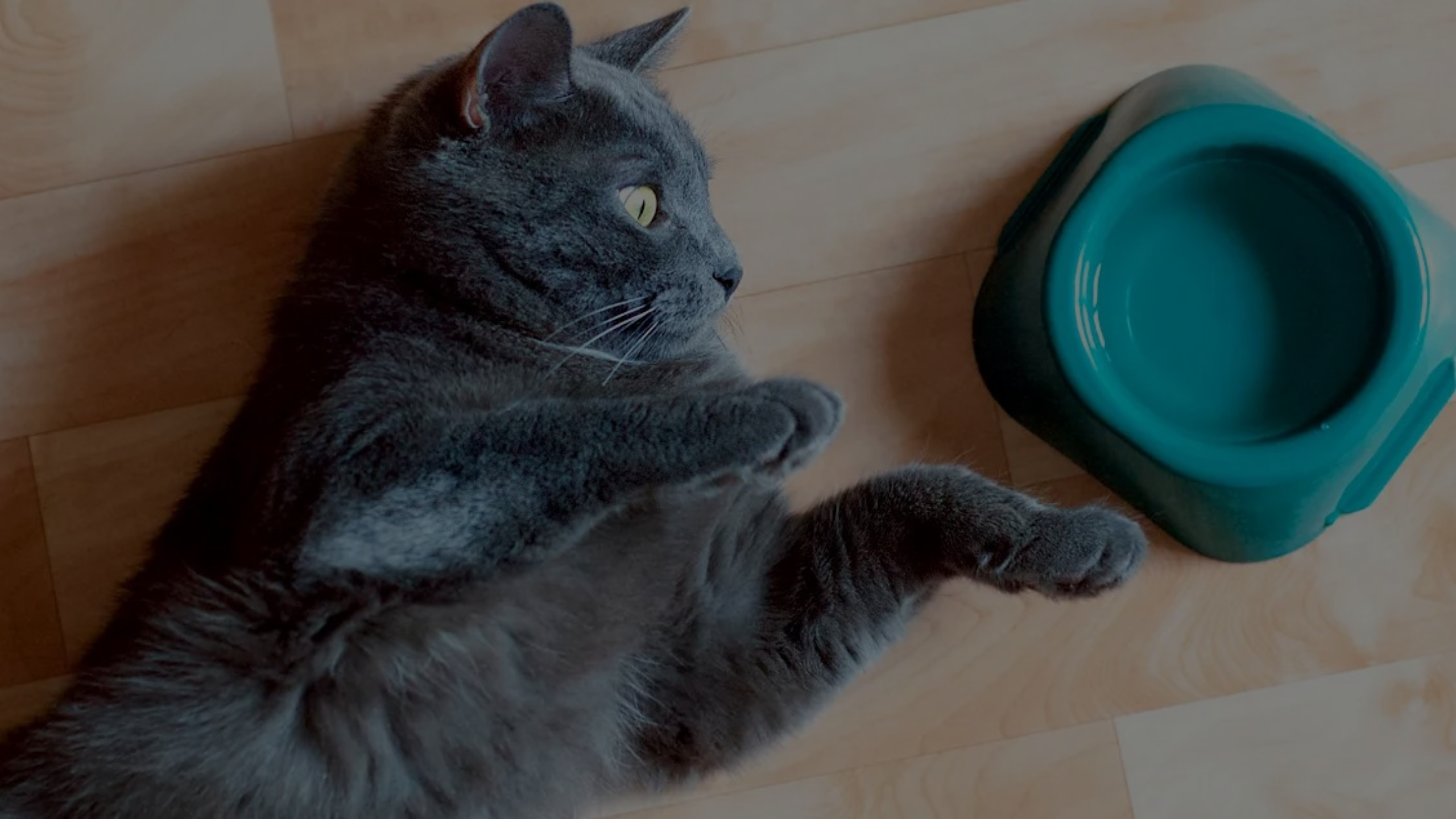As a devoted cat lover, I understand how concerning it can be when your cat not drinking water. Cats are notorious for their independent nature, but we must pay close attention to hydration. This comprehensive guide explores why your cat might not be drinking water, how to recognize signs of dehydration, and practical steps to ensure your kitty stays well-hydrated.
Cat Sitting in Front of Water Bowl but Not Drinking
There could be several reasons why your cat is sitting in front of the water bowl but not drinking:
- Health Concerns
- Preference for Running Water
- Quality of Water
- Dehydration

Why Won’t My Cat Drink Water Normally?
Before we dive into the details, let’s address the central question: Why is your cat not drinking water? These are the factors that could contribute to this behaviour:
- Preference for Fresh Water: Cats are finicky creatures. They prefer fresh, clean water. They might turn up their noses if their water bowl isn’t pristine.
- Health Issues: Underlying health conditions can affect a cat’s thirst. Dental problems, kidney disease, or urinary tract infections may make drinking uncomfortable.
- Environmental Factors: Stress, changes in routine, or a new location can disrupt your cat’s drinking habits. Cats are sensitive beings, and any upheaval can impact their behaviour.
- Food Moisture Content: Cats obtain some of their hydration from wet food. If your cat primarily eats wet food, they might not feel the need to drink as much water.
Signs of Dehydration in Cats
Detecting dehydration early is crucial for your cat’s well-being. Look out for these warning signs:
- Sunken Eyes: If your cat’s eyes appear open, it’s a sign of dehydration.
- Loss of Skin Elasticity: Gently pinch the skin on the back of your cat’s neck. If it doesn’t snap back quickly, your cat might be dehydrated.
- Lethargy: A lethargic cat could be lacking proper hydration.
- Tacky Gums: Healthy gums should be pink and moist. Dry or sticky gums indicate dehydration.
- Dull Eyes: Dehydrated cats often have pale, lacklustre eyes.

Simple At-Home Tests
You don’t need a veterinary degree to assess your cat’s hydration status. Try these quick tests:
The Skin Tent Test:
- Gently lift the skin behind your cat’s shoulders.
- If the skin falls back into place promptly, all is well.
- Your cat might be dehydrated if it remains tented or falls back slowly.
The Gum Test:
- Check your cat’s gums. They should be pink and moist.
- Dry, tacky gums indicate dehydration.
- Press your finger against the gums; seek immediate veterinary care if the white spot lingers.
How Do You Hydrate a Cat That Won’t Drink Water?
Now that we’ve identified the problem let’s find solutions:
- Fresh Water: Change your cat’s water daily. Rinse the bowl with hot water and dish soap to keep it appealing.
- Multiple Water Sources: Place water bowls in different areas of your home. Cats appreciate options.
- Water Fountains: Some cats love the sound of running water. Consider investing in a cat water fountain.

Image Credit: iStock - Wet Food: If your cat enjoys damp food, it’s an excellent source of hydration.
- Ice Cubes: Drop a few ice cubes into the water bowl. Some cats find this intriguing.
- Cat Milk: Offer cat-safe milk (lactose-free) as an occasional treat.
- Cat Sugar Water: It is a mixture of water and a small amount of sugar, often mixed with other flavours to make it even more appealing to cats.
How to Get Sick Cat to Drink Water?
To encourage a sick cat to drink water, address the illness causing the aversion to drinking, and consider veterinary intervention for severe dehydration. Utilize anti-nausea medication and pain management to stimulate appetite.
Enhance the cat’s environment with high-water content food, stress management, flavoured water, and multiple water sources.
If necessary, use a syringe to administer a food and water slurry. Always consult a vet if the cat refuses food or water for over 24 hours.
How Much Water Should a Cat Drink Per Day?
Cats need approximately 1–2 millilitres of water per kilogram of weight every hour. For a 10-pound cat, this translates to roughly one cup (240 millilitres) of water per day.
Factors Influencing Intake:
- Diet: Cats consuming wet food receive some hydration from their meals. If your cat primarily eats dry kibble, they’ll need more water.
- Health Conditions: Illnesses like kidney disease or diabetes may increase water requirements.
- Temperature and Activity: Hot weather or increased physical activity can lead to higher water needs.
Can Cats Drink Milk?
The short answer is no. Milk is not safe for cats. While kittens can digest their mother’s milk during their early weeks, most adult cats lose the ability to process lactose (the sugar found in milk) as they grow older.
Can Cats Drink Juice?
Natural juices in small quantities are generally safe for cats and can provide a bit of vitamin C, and it’s best to avoid giving them juice altogether. Cats are obligate carnivores, and their primary diet should consist of meat. Juice may lead to digestive issues, and many commercial juices contain harmful additives. Stick to water as the safest beverage for your feline friend.

References & Resources
- https://www.rover.com/blog/cat-dehydration/
- https://www.hillspet.com/cat-care/routine-care/why-cats-not-drinking-water-and-dehydration
- https://www.petmd.com/cat/symptoms/why-your-cat-wont-drink-water-and-what-do
- https://www.felineliving.net/how-much-water-does-a-cat-need/
- https://www.catster.com/guides/drinks-a-cat-can-have-besides-water/
Disclaimer: This article is not a substitute for professional veterinary advice. Always consult your veterinarian if you have concerns about your cat’s health.







![Does My Cat Have Anxiety – [Quiz]](https://petsybox.com/wp-content/uploads/2023/09/Does-My-Cat-Have-Anxiety-Featured-Images-768x432.webp)
